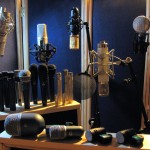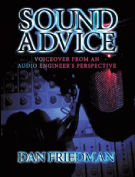 Why am I writing this blog post? Because I want to remind you to take the time to stop and consciously ask yourself, “why?”. “Why?” is a question that we often forget to ask ourselves as we go about our day or do our jobs. Typically, we either know the answer (or think we do) based on past experience or we simply do what we always do out of habit. We also have a tendency to do things because someone told us to, but without asking ourselves why doing what they said is the right thing to do. Taking the time to ask and answer this simple question can be very enlightening. It can also help you make better decisions about gear, deliveries, production and maybe even your life… but today, we’ll just focus on your career.
Why am I writing this blog post? Because I want to remind you to take the time to stop and consciously ask yourself, “why?”. “Why?” is a question that we often forget to ask ourselves as we go about our day or do our jobs. Typically, we either know the answer (or think we do) based on past experience or we simply do what we always do out of habit. We also have a tendency to do things because someone told us to, but without asking ourselves why doing what they said is the right thing to do. Taking the time to ask and answer this simple question can be very enlightening. It can also help you make better decisions about gear, deliveries, production and maybe even your life… but today, we’ll just focus on your career.
If your shopping for new gear ask yourself:
Why do I need new gear?
Why am I considering this microphone?
Why do I like this mic preamp?
If you’re in the booth reading a script ask yourself:
Why am I using this emphasis or these inflections?
Why is this the direction that has been given?
Why is this the right delivery?
If you are doing editing and production ask yourself:
Why am I using several compressors, 2 EQs and a limiter on this channel?
Why does this take sound better than that other one?
Why will this music bed work better than another one?
If you are directing, writing or preparing for a voiceover session ask yourself:
Why is this the right voice for my production?
Why don’t I try reading this out loud and use a stopwatch to see if it fits in time?
Why is this talent taking 42 takes to read my :05 tag?
Sometimes the answer is obvious and you can answer the question of “why?” easily. Sometimes it leads to more questions. Either way, taking the time to consciously ask often produces more definitive answers and ultimately greater awareness. While we rarely stop and take the time to ask ourselves this most basic question, doing so can often change the way we look at what we do and how we do it. It keeps us thinking, growing and improving. Why would anyone question that?
 Since returning from Italy a couple of weeks ago, I’ve been dealing with a trademark issue regarding the name of my website. While I won’t express my thoughts about the need for this change or even get into the specifics, I will say that it is great to know that my book
Since returning from Italy a couple of weeks ago, I’ve been dealing with a trademark issue regarding the name of my website. While I won’t express my thoughts about the need for this change or even get into the specifics, I will say that it is great to know that my book 



